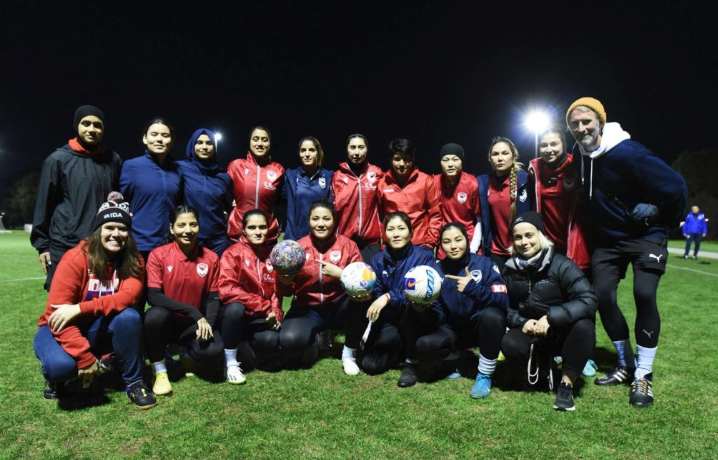As soccer, or football, becomes more global, it has become more diverse. The World Cup, both the men’s and women’s contests, are surging in popularity. Footballers have often given back to communities as gestures of respect and generosity. Activism in politics and social issues has intersected with soccer as the world tunes in to games.
Much like how the Olympic torch journeys around the globe before the Summer or Winter Games opening ceremony, the FIFA World Cup has something similar. Started by the U.K. nonprofit Spirit of Football (SOF), “The Ball” has been to every World Cup since 2002. It hit a milestone this year by traveling to its first Women’s World Cup. Stopping in 20 countries en route to Australia and New Zealand, The Ball is promoting gender equality and environmental issues.
Andrew Aris, New Zealand international, former Notre Dame soccer player, and director of SOF, thinks the Women’s World Cup is more conducive to the values The Ball promotes. He told “Forbes” that he believes women’s matches are more inclusive events. His sentiment is understandable, as women’s soccer has been supportive of the LGBTQ+ community.
As The Ball traveled, it gathered signatures from people who participated in football-inclusive events. Climate change was the focus of the journey to Australia and New Zealand.
SOF worked with Cool Down Network, a sports climate action nonprofit, to provide each country with statistics and facts about the country’s climate situation. Fans participated in educational opportunities to see how they could get involved in climate conservation. Activities like beach cleanups, role-playing, and sustainable development goals teach kids the importance of reducing pollution and living more sustainably.
Fair Play football is one of the more notable activities. Its matches are soccer games played with six climate handicap rules introduced to explain how soccer is affected by climate change. Participants play through things like patches of litter to show how pollution affects football matches.

Photo Courtesy The Ball
Various sustainable workshops and Fair Play games were carried out across stops in Vietnam, Fiji, Cambodia, and Kiribati. Kiribati’s only female leader signed The Ball while it was in her country, calling on women to stand up for rights. The U.S. Ambassador to Cambodia signed it, too, and pledged to run the U.S. Embassy sustainably.
The Ball reached New Zealand in late June, stopping in East Auckland to promote sustainability in sports. It visited the New Zealand women’s team and the All Blacks, the famous rugby team.
Australia was the final stop for The Ball. It made its way to Sydney, stopping in cities like Melbourne and Perth. It worked with Melbourne City FC and Vasse Soccer Club. More sustainability workshops were carried out with the Australian clubs. The Ball also attended Festival 23, a youth soccer event to celebrate “the power and influence of football for good by bringing together our local and global football communities.”
England and Spain took each other in the Final on Aug. 20. Spain won 1–0, the first European nation to take home the prize since 2007.
The Ball will head to COP28 in Dubai starting in November. The findings and observations along the journey to the World Cup will be shared at the geopolitical summit.
The Ball is only a symbol; however, plenty of women’s national teams took action to show solidarity with fans. The German women’s team, working with German football nonprofit Common Goal, is pledging 1% of the team’s prize money to inclusive and gender-equal football projects in Germany.
The United States women’s national soccer team (USWNT), also working with Common Goal, is raising awareness about mental health. They will work with youth sports programs in the U.S. to teach athletes skills to cope with fan pressure.
The Ball even stopped to visit the Afghan women’s national team, which is residing in Melbourne after fleeing its home nation during the Taliban’s takeover.

Photo Courtesy Hamish John Appleby
The most notable climate action during this World Cup is 47 women from four countries running the largest player-led climate action campaign. Three players from the Danish, Canadian, and Italian teams started the coalition. It donates to causes like tree planting, koala habitat preservation, and World Wildlife Fund New Zealand’s conversation efforts.
The coalition worked with Common Goal and Football For Future, another football nonprofit. Players calculated their carbon emission output using the myclimate calculator, donating to sequestration efforts per ton of carbon emitted.
The Ball will head to North America as the U.S., Mexico, and Canada prepare for the 2026 World Cup.





